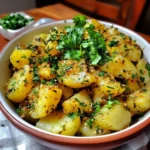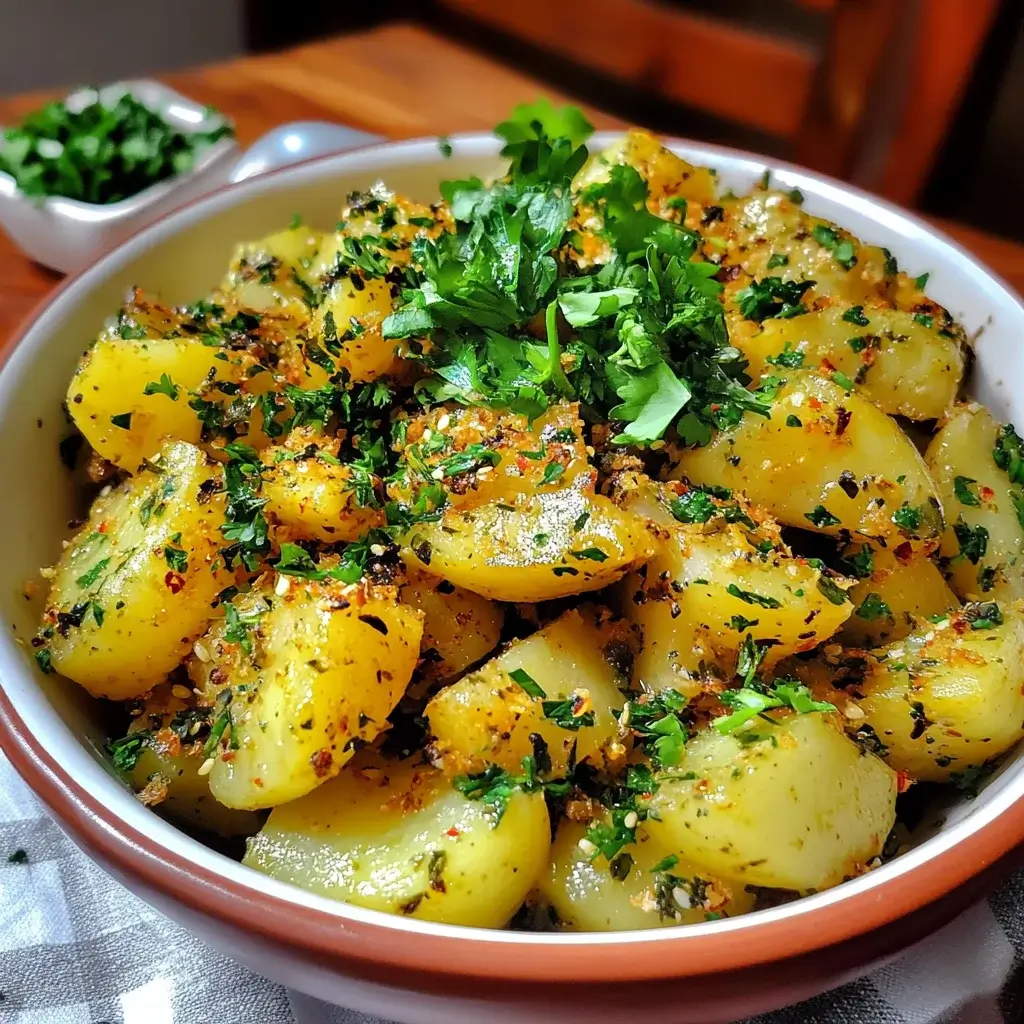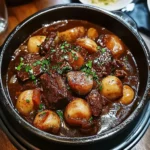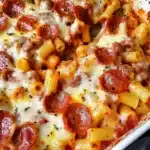I still remember the first time I encountered Batata Harra. It wasn’t at a fancy restaurant, but at a bustling family gathering, piled high on a platter amidst colourful salads, creamy hummus, and smoky baba ghanoush. The aroma alone was captivating – a heady mix of garlic, cilantro, and something intriguingly spicy. Golden, crispy-looking cubes of potato beckoned. Tentatively, I took one, then another, and suddenly, I was completely hooked. The explosion of flavour was incredible: the fluffy interior and crisp exterior of the potato, the pungent hit of garlic, the fresh, vibrant notes of cilantro, the warming embrace of chili, all brightened by a final squeeze of lemon. It was simple, yet utterly profound. That day, I knew I had to learn how to make it. Recreating it at home became a mini-obsession. My first few attempts were okay, but they lacked that perfect balance, that oomph. Through trial, error, and conversations with Lebanese friends, I finally nailed it. Now, Batata Harra is a staple in our house. Whenever I make it, whether as part of a larger Lebanese feast or just as a hearty side dish on a weeknight, it disappears in minutes. My family adores the textural contrast and the bold flavours; even the kids, with a slightly reduced chili amount, can’t get enough. It’s proof that sometimes, the most memorable dishes are born from humble ingredients transformed by technique and a touch of spice. This recipe isn’t just food; it’s a flavour bomb, a crowd-pleaser, and a little piece of Lebanese sunshine on a plate. It’s a dish that invites sharing, conversation, and pure, unadulterated enjoyment.
Ingredients for Authentic Lebanese Batata Harra
Crafting the perfect Batata Harra hinges on using fresh, high-quality ingredients. While the list isn’t long, each component plays a crucial role in building the signature flavour profile. Here’s what you’ll need:
- Potatoes: 2 lbs (about 900g – 1kg) Starchy Potatoes (Russets, King Edward, or Maris Piper work best). The key here is starchy. These varieties yield potatoes that become wonderfully fluffy on the inside while developing a beautifully crisp exterior when roasted or fried. Waxy potatoes tend to hold their shape too well and don’t achieve the same textural contrast. Choose medium-to-large potatoes that are firm, smooth, and free from blemishes or green spots.
- Olive Oil: 1/3 cup (80ml) Extra Virgin Olive Oil (for roasting), OR Neutral Oil for deep-frying (like vegetable, canola, or sunflower oil, approx. 3-4 cups / 700-950ml if deep frying). If roasting, a good quality extra virgin olive oil adds a subtle fruity note that complements the other flavours. If deep-frying, a neutral oil with a high smoke point is essential for achieving crispiness without burning. We will also use a little olive oil for sautéing the aromatics.
- Garlic: 6-8 cloves, finely minced. Fresh garlic is non-negotiable here. Its pungent, sharp flavour is fundamental to Batata Harra. The amount can be adjusted to your preference, but 6-8 cloves provide a robust garlic presence that defines the dish. Mince it finely to ensure it distributes evenly and releases its maximum flavour without burning too quickly. Pre-minced jarred garlic often lacks the bright intensity of fresh.
- Fresh Cilantro (Coriander): 1 large bunch (about 1.5 cups loosely packed leaves and tender stems), finely chopped, divided. Cilantro provides the fresh, herbaceous counterpoint to the spice and garlic. Use both the leaves and the tender upper stems, as the stems carry a lot of flavour. Chop it finely just before using. We’ll use most of it in the sautéing step and reserve some for garnish. Dried cilantro is not a suitable substitute here; the fresh flavour is essential.
- Red Pepper Flakes (Chili Flakes): 1-2 teaspoons, or to taste. This is where the “Harra” (spicy/hot) comes from! Standard red pepper flakes work well. For a more authentic Middle Eastern flavour, consider using Aleppo pepper flakes (Pul Biber). Aleppo pepper offers moderate heat with fruity, slightly smoky undertones that are less harsh than standard chili flakes. Start with 1 teaspoon and add more if you desire more heat. The spice should be present and warming, not overwhelmingly fiery.
- Ground Coriander: 1 teaspoon. While fresh cilantro provides herbaceousness, ground coriander seeds add a warm, citrusy, slightly earthy depth that complements the fresh herb beautifully. It adds another layer to the complex flavour profile.
- Salt: 1.5 teaspoons (or to taste), divided. Essential for flavouring the potatoes and the final dish. Use sea salt or kosher salt for preference. You’ll use some for seasoning the potatoes before cooking and adjust the final seasoning after combining everything.
- Fresh Lemon Juice: 2-3 tablespoons (from 1 medium lemon). Added at the very end, fresh lemon juice brightens all the flavours, cuts through the richness of the oil and potatoes, and adds a crucial tangy finish. Bottled lemon juice lacks the vibrant zing of fresh.
- Optional Paprika: 1 teaspoon (sweet or smoked). While not strictly traditional in all variations, a touch of paprika can enhance the colour and add a subtle sweetness or smokiness (if using smoked paprika) that works well with the other ingredients.
Having these ingredients prepped and ready (mise en place) will make the cooking process smooth and enjoyable. The quality of each element, especially the potatoes, fresh garlic, cilantro, and lemon juice, directly impacts the final deliciousness of your Batata Harra.
Step-by-Step Instructions for Perfect Batata Harra
Making Batata Harra involves two main stages: cooking the potatoes until crisp and fluffy, and then tossing them in the aromatic, spicy cilantro-garlic sauce. We’ll focus primarily on the roasting method for the potatoes as it uses less oil and is generally easier for home cooks, but we’ll also touch upon the traditional deep-frying method.
Stage 1: Preparing and Cooking the Potatoes (Roasting Method)
- Preheat Oven & Prepare Pan: Preheat your oven to a high temperature, typically 425°F (220°C). High heat is crucial for achieving crispy edges. Line a large baking sheet with parchment paper for easy cleanup and to prevent sticking. Avoid overcrowding the pan; use two sheets if necessary. Overcrowding steams the potatoes rather than roasting them.
- Peel and Cube Potatoes: Wash the potatoes thoroughly. Peel them using a vegetable peeler. Cut the peeled potatoes into uniform cubes, approximately 3/4-inch to 1-inch (about 2-2.5 cm) in size. Uniformity is key to ensuring they cook evenly. If the cubes are too large, the inside might not cook through by the time the outside is crisp; if too small, they might dry out or burn.
- Rinse and Dry (Optional but Recommended): Place the potato cubes in a large bowl and cover them with cold water. Give them a gentle swirl. Drain the water. Repeat this process 2-3 times until the water runs relatively clear. This step rinses off excess surface starch, which helps the potatoes crisp up better during roasting. After rinsing, thoroughly dry the potato cubes using paper towels or a clean kitchen towel. Moisture is the enemy of crispiness, so ensure they are as dry as possible before adding oil.
- Season the Potatoes: Place the dried potato cubes back into the (now dry) large bowl. Drizzle with the 1/3 cup (80ml) of extra virgin olive oil. Sprinkle with about 1 teaspoon of salt and the optional 1 teaspoon of paprika (if using). Toss gently but thoroughly to ensure every cube is evenly coated with oil and seasoning.
- Roast the Potatoes: Spread the seasoned potato cubes in a single layer on the prepared baking sheet(s). Ensure they are not touching too much. Roast in the preheated oven for 30-45 minutes. Check and toss the potatoes halfway through (around the 15-20 minute mark) using a spatula to promote even browning and crisping on all sides.
- Check for Doneness: The potatoes are ready when they are golden brown, crispy on the outside, and easily pierced with a fork, indicating a tender, fluffy interior. Cooking time can vary depending on your oven and the exact size of the cubes. If they aren’t crisp enough after 40 minutes, you can increase the heat slightly (to 450°F/230°C) for the last 5-10 minutes, watching carefully to prevent burning.
Alternative Stage 1: Deep-Frying Method (Traditional)
- Prepare Potatoes: Peel, cube, rinse, and thoroughly dry the potatoes as described above. Drying is even more critical for deep frying to prevent dangerous oil splatters.
- Heat Oil: Pour about 3-4 inches of neutral, high-smoke point oil (like canola, vegetable, or sunflower oil) into a heavy-bottomed pot or Dutch oven. Heat the oil over medium-high heat until it reaches 350°F (175°C). Use a thermometer for accuracy.
- Fry in Batches: Carefully add a portion of the dried potato cubes to the hot oil, being cautious not to overcrowd the pot. Fry for 5-8 minutes, or until golden brown and cooked through. Stir occasionally for even cooking.
- Drain: Use a slotted spoon or spider strainer to remove the cooked potatoes from the oil. Transfer them to a wire rack set over a baking sheet or a plate lined with paper towels to drain excess oil. Sprinkle immediately with salt while they are still hot. Repeat with the remaining potato cubes, ensuring the oil returns to temperature between batches.
Stage 2: Making the Cilantro-Garlic Sauce and Finishing the Dish
- Prepare Aromatics: While the potatoes are finishing their cooking (in the last 5-10 minutes of roasting or after frying), prepare the sauce. Finely mince the garlic cloves and finely chop the fresh cilantro (reserving about 2 tablespoons for garnish).
- Sauté Aromatics: Heat 1-2 tablespoons of olive oil in a large skillet or wok over medium heat. Once the oil is shimmering slightly, add the minced garlic and the red pepper flakes (start with 1 tsp, add more later if desired). Sauté for about 30-60 seconds until the garlic is fragrant but not browned. Burnt garlic tastes bitter and will ruin the dish. Be vigilant here.
- Add Cilantro and Spices: Immediately add the majority of the chopped fresh cilantro (saving some for garnish) and the 1 teaspoon of ground coriander to the skillet. Stir continuously and cook for another minute or so, just until the cilantro wilts slightly and becomes intensely aromatic. The kitchen should smell amazing at this point!
- Combine Potatoes and Sauce: Turn off the heat under the skillet. Add the hot, cooked potato cubes (whether roasted or fried) directly into the skillet with the cilantro-garlic mixture.
- Add Lemon Juice and Seasoning: Drizzle the fresh lemon juice over the potatoes. Add the remaining 1/2 teaspoon of salt (or to taste). Gently toss everything together until the potato cubes are well coated with the aromatic sauce. Be gentle to avoid mashing the tender potatoes, especially if they are very fluffy inside.
- Taste and Adjust: Taste a potato cube. Adjust seasoning as needed – more salt? More red pepper flakes for heat? Another small squeeze of lemon juice for brightness? This is your chance to perfect the balance.
- Garnish and Serve: Transfer the Batata Harra to a serving platter. Garnish generously with the reserved chopped fresh cilantro. Serve immediately while hot and crispy.
Following these steps carefully, paying attention to details like drying the potatoes and not burning the garlic, will reward you with truly exceptional, restaurant-quality Batata Harra.
Nutritional Information (Approximate)
Understanding the nutritional profile can be helpful. Please note that these values are estimates and can vary based on the specific ingredients used (especially the type and amount of oil), potato size, and exact serving portions.
- Servings: This recipe typically yields 4 to 6 servings, depending on whether it’s served as a main side dish or part of a larger mezze spread.
- Calories per Serving (Approximate):
- If Roasted: Approximately 250-350 calories per serving (assuming 6 servings). Roasting uses significantly less oil than deep-frying.
- If Deep-Fried: Approximately 350-500+ calories per serving (assuming 6 servings). The potatoes absorb more oil during deep-frying, increasing the calorie count considerably.
Key Nutritional Contributions:
- Carbohydrates: Primarily from the potatoes, providing energy.
- Fat: Mostly from the olive oil or frying oil. Olive oil contributes healthier monounsaturated fats.
- Fiber: Potatoes (especially with skin left on, though traditionally peeled for this dish) and cilantro offer some dietary fiber.
- Vitamins & Minerals: Potatoes are a good source of potassium and Vitamin C. Cilantro and garlic add smaller amounts of various vitamins and antioxidants. Lemon juice boosts the Vitamin C content.
- Sodium: Comes mainly from the added salt; adjust according to dietary needs.
This dish is inherently vegetarian and vegan. It is also naturally gluten-free, provided no gluten-containing ingredients are inadvertently added. While incredibly delicious, due to the oil and potato content, it’s best enjoyed in moderation as part of a balanced diet.
Preparation and Cooking Time
Planning your cooking requires knowing the time commitment. Here’s a breakdown for the Batata Harra recipe (using the roasting method):
- Preparation Time: 15-20 minutes
- This includes washing, peeling, and cubing the potatoes.
- Mincing the garlic and chopping the cilantro.
- Measuring out spices and other ingredients.
- (Optional rinsing and drying of potatoes adds about 5-10 minutes, mostly inactive time).
- Cooking Time: 35-50 minutes
- Roasting Potatoes: 30-45 minutes (depending on oven and cube size).
- Sautéing Aromatics & Finishing: 5 minutes (best done while potatoes are almost ready).
- Total Time: Approximately 50 minutes to 1 hour 10 minutes
Note on Deep-Frying: If deep-frying, the potato cooking time per batch is shorter (5-8 minutes), but you’ll need to factor in the time to heat the oil and cook in multiple batches, which might make the total cooking time similar or slightly longer than roasting, depending on the size of your fryer/pot.
This timeframe makes Batata Harra achievable for a weeknight meal if you prep efficiently, but it’s also relaxed enough for weekend cooking or entertaining.
How to Serve Batata Harra: Elevating Your Dish
Batata Harra is incredibly versatile and shines in various settings. Here’s how to serve it to maximize enjoyment:
- As Part of a Lebanese Mezze Spread: This is arguably its most classic role. Arrange Batata Harra on a platter alongside other small dishes for a vibrant and varied meal. It pairs beautifully with:
- Creamy dips: Hummus, Baba Ghanoush, Labneh (strained yogurt)
- Fresh salads: Tabbouleh, Fattoush
- Other small bites: Falafel, Kibbeh, Stuffed Grape Leaves (Warak Enab), Spinach Fatayer (pastries)
- Pita bread for scooping everything up!
- As a Standout Side Dish: Move beyond the mezze table! Batata Harra is a fantastic accompaniment to various main courses. Its bold flavours complement:
- Grilled Meats: Sensational with Shish Tawook (chicken skewers), Kafta (grilled minced meat), lamb chops, or grilled steak. The spicy, garlicky potatoes cut through the richness of the meat.
- Roasted Chicken or Fish: Serve alongside a simple roast chicken or baked/grilled fish (like sea bass or cod) for a flavourful contrast.
- Vegetarian Mains: Pair it with lentil dishes (Mujadara), chickpea stews, or grilled halloumi for a satisfying vegetarian meal.
- As a Delicious Appetizer or Snack: Serve a bowl of hot, crispy Batata Harra on its own with some lemon wedges on the side. It’s perfect for sharing with drinks before dinner or as a hearty snack. You could even serve it with a cooling yogurt or garlic dip (Toum, used sparingly) on the side.
- Presentation Tips for Maximum Appeal:
- Serve Hot: Batata Harra is best served immediately while the potatoes are hot and crispy.
- Garnish Generously: Don’t skimp on the final sprinkle of fresh, chopped cilantro. Its vibrant green colour and fresh aroma add immense appeal.
- Lemon Wedges: Always provide extra lemon wedges on the side for those who like an extra zing.
- Serving Dish: Use a shallow bowl or platter that showcases the golden, glistening potatoes. A rustic ceramic or earthenware dish looks particularly fitting.
- Optional Drizzle: A tiny drizzle of extra virgin olive oil just before serving can add a final sheen and touch of richness.
- Spice Level Indicator: If serving guests, you might mention the spice level or offer extra chili flakes on the side for those who like it hotter.
No matter how you serve it, Batata Harra is guaranteed to be a talking point, bringing warmth, spice, and authentic Lebanese flavour to your table.
Expert Tips for Mastering Batata Harra
While Batata Harra is straightforward, a few key tips can elevate your dish from good to truly exceptional. Here are five expert pointers:
- Choose the Right Potato (Starchy is Key): This cannot be stressed enough. Using starchy potatoes like Russets, King Edwards, or Maris Pipers is crucial. Their low moisture and high starch content lead to fluffy interiors and allow the exterior to develop that desirable crispness during cooking (roasting or frying). Waxy potatoes (like Red Bliss or fingerlings) hold their shape well but tend to remain dense and won’t give you that essential textural contrast. The right potato forms the foundation of great Batata Harra.
- Embrace High Heat & Don’t Crowd the Pan: Whether roasting or frying, high heat is your friend for crispiness. For roasting, ensure your oven is fully preheated to 425°F (220°C). Crucially, spread the potatoes in a single layer on the baking sheet with space between them. Overcrowding traps steam, leading to soggy potatoes instead of crispy ones. Use two baking sheets if necessary. For frying, ensure the oil is at the correct temperature (350°F/175°C) and fry in batches.
- Master the Garlic Moment: Fresh garlic is essential, but it burns easily, turning bitter and ruining the dish. When making the sauce, add the minced garlic to moderately hot oil and sauté only until fragrant (30-60 seconds). Have your cilantro and spices ready to add immediately after the garlic becomes aromatic. This stops the garlic from cooking further and prevents burning while infusing the oil beautifully.
- Fresh Herbs and Lemon are Non-Negotiable: The vibrant freshness of Batata Harra comes significantly from the generous amount of fresh cilantro and the final squeeze of fresh lemon juice. Do not substitute dried cilantro – it lacks the bright, pungent flavour required. Similarly, use freshly squeezed lemon juice; its acidity cuts through the richness and brightens all the other flavours in a way bottled juice cannot replicate. Add the lemon juice off the heat at the very end to preserve its fresh taste.
- Dry Your Potatoes Thoroughly: After cubing and rinsing (if you choose to rinse), drying the potatoes is vital. For roasting, excess moisture hinders browning and crisping. For deep-frying, adding wet potatoes to hot oil is extremely dangerous and causes violent splattering, while also lowering the oil temperature and leading to greasy results. Use paper towels or a clean kitchen towel and pat them completely dry before proceeding with oil and seasoning. This simple step makes a huge difference in the final texture.
By incorporating these tips, you’ll consistently achieve Batata Harra with perfectly crispy yet fluffy potatoes, a well-balanced, aromatic sauce, and that irresistible authentic Lebanese flavour.
Frequently Asked Questions (FAQ) about Batata Harra
Here are answers to some common questions about making and enjoying Lebanese Batata Harra:
- Q: Can I make Batata Harra ahead of time?
- A: Batata Harra is truly best served fresh, right after tossing the hot potatoes with the sauce, to maintain maximum crispiness. However, you can do some prep ahead. You can peel and cube the potatoes and store them submerged in cold water in the refrigerator for up to 24 hours (drain and dry thoroughly before use). You can also pre-chop the cilantro and mince the garlic. The potatoes can be roasted or fried ahead of time, cooled, and stored in an airtight container. To reheat, spread them on a baking sheet and reheat in a hot oven (around 400°F/200°C) until heated through and re-crisped (about 10-15 minutes). Prepare the sauce fresh just before serving and toss the reheated potatoes in it. While not quite as perfect as freshly made, this method yields decent results. Avoid microwaving, as it makes the potatoes soggy.
- Q: Is Batata Harra vegan and gluten-free?
- A: Yes, traditionally prepared Batata Harra is naturally both vegan and gluten-free. The core ingredients are potatoes, olive oil, garlic, cilantro, chili flakes, coriander, salt, and lemon juice – all of which fit into both dietary patterns. Just ensure you are using pure olive oil or vegetable oil for cooking and check that your spices (like chili flakes or paprika) don’t have any anti-caking agents containing gluten, though this is uncommon.
- Q: What’s the best type of potato to use? Can I use sweet potatoes?
- A: The best potatoes are starchy varieties like Russets (Idaho), King Edward, or Maris Piper. These give the ideal fluffy interior and crispy exterior. Waxy potatoes are not recommended. While you could technically make a variation using sweet potatoes, it wouldn’t be traditional Batata Harra. Sweet potatoes have a different texture and a distinct sweetness that would significantly change the flavour profile. If you try it, you might need to adjust the seasoning (perhaps less lemon, different spices) to complement the sweetness.
- Q: Can I use dried cilantro instead of fresh?
- A: It’s strongly recommended not to use dried cilantro. Fresh cilantro (coriander leaf) provides a unique, bright, pungent, and almost citrusy flavour that is absolutely essential to authentic Batata Harra. Dried cilantro has a much duller, dustier flavour profile and simply cannot replicate the vibrancy needed in this dish. The ground coriander seed provides the warm, earthy notes, while the fresh cilantro provides the irreplaceable herbaceous lift. Stick with fresh for the best results.
- Q: How can I adjust the spiciness level?
- A: Adjusting the heat is easy! The spiciness comes primarily from the red pepper flakes (chili flakes). The recipe suggests 1-2 teaspoons, which provides a noticeable warmth.
- For Less Spice: Start with just 1/2 teaspoon of red pepper flakes. You can always add more at the end if desired, or serve extra flakes on the side. Using Aleppo pepper flakes generally provides a milder, fruitier heat than standard crushed red pepper.
- For More Spice: Increase the amount to 2.5 or 3 teaspoons, or even more, depending on your tolerance. You could also add a finely minced fresh hot chili (like a serrano or a pinch of cayenne pepper) along with the garlic for an extra layer of heat. Always taste and adjust carefully.
- A: Adjusting the heat is easy! The spiciness comes primarily from the red pepper flakes (chili flakes). The recipe suggests 1-2 teaspoons, which provides a noticeable warmth.

Lebanese Batata Harra Recipe
Ingredients
- Potatoes: 2 lbs (about 900g – 1kg) Starchy Potatoes (Russets, King Edward, or Maris Piper work best). The key here is starchy. These varieties yield potatoes that become wonderfully fluffy on the inside while developing a beautifully crisp exterior when roasted or fried. Waxy potatoes tend to hold their shape too well and don’t achieve the same textural contrast. Choose medium-to-large potatoes that are firm, smooth, and free from blemishes or green spots.
- Olive Oil: 1/3 cup (80ml) Extra Virgin Olive Oil (for roasting), OR Neutral Oil for deep-frying (like vegetable, canola, or sunflower oil, approx. 3-4 cups / 700-950ml if deep frying). If roasting, a good quality extra virgin olive oil adds a subtle fruity note that complements the other flavours. If deep-frying, a neutral oil with a high smoke point is essential for achieving crispiness without burning. We will also use a little olive oil for sautéing the aromatics.
- Garlic: 6-8 cloves, finely minced. Fresh garlic is non-negotiable here. Its pungent, sharp flavour is fundamental to Batata Harra. The amount can be adjusted to your preference, but 6-8 cloves provide a robust garlic presence that defines the dish. Mince it finely to ensure it distributes evenly and releases its maximum flavour without burning too quickly. Pre-minced jarred garlic often lacks the bright intensity of fresh.
- Fresh Cilantro (Coriander): 1 large bunch (about 1.5 cups loosely packed leaves and tender stems), finely chopped, divided. Cilantro provides the fresh, herbaceous counterpoint to the spice and garlic. Use both the leaves and the tender upper stems, as the stems carry a lot of flavour. Chop it finely just before using. We’ll use most of it in the sautéing step and reserve some for garnish. Dried cilantro is not a suitable substitute here; the fresh flavour is essential.
- Red Pepper Flakes (Chili Flakes): 1-2 teaspoons, or to taste. This is where the “Harra” (spicy/hot) comes from! Standard red pepper flakes work well. For a more authentic Middle Eastern flavour, consider using Aleppo pepper flakes (Pul Biber). Aleppo pepper offers moderate heat with fruity, slightly smoky undertones that are less harsh than standard chili flakes. Start with 1 teaspoon and add more if you desire more heat. The spice should be present and warming, not overwhelmingly fiery.
- Ground Coriander: 1 teaspoon. While fresh cilantro provides herbaceousness, ground coriander seeds add a warm, citrusy, slightly earthy depth that complements the fresh herb beautifully. It adds another layer to the complex flavour profile.
- Salt: 1.5 teaspoons (or to taste), divided. Essential for flavouring the potatoes and the final dish. Use sea salt or kosher salt for preference. You’ll use some for seasoning the potatoes before cooking and adjust the final seasoning after combining everything.
- Fresh Lemon Juice: 2-3 tablespoons (from 1 medium lemon). Added at the very end, fresh lemon juice brightens all the flavours, cuts through the richness of the oil and potatoes, and adds a crucial tangy finish. Bottled lemon juice lacks the vibrant zing of fresh.
- Optional Paprika: 1 teaspoon (sweet or smoked). While not strictly traditional in all variations, a touch of paprika can enhance the colour and add a subtle sweetness or smokiness (if using smoked paprika) that works well with the other ingredients.
Instructions
Stage 1: Preparing and Cooking the Potatoes (Roasting Method)
- Preheat Oven & Prepare Pan: Preheat your oven to a high temperature, typically 425°F (220°C). High heat is crucial for achieving crispy edges. Line a large baking sheet with parchment paper for easy cleanup and to prevent sticking. Avoid overcrowding the pan; use two sheets if necessary. Overcrowding steams the potatoes rather than roasting them.
- Peel and Cube Potatoes: Wash the potatoes thoroughly. Peel them using a vegetable peeler. Cut the peeled potatoes into uniform cubes, approximately 3/4-inch to 1-inch (about 2-2.5 cm) in size. Uniformity is key to ensuring they cook evenly. If the cubes are too large, the inside might not cook through by the time the outside is crisp; if too small, they might dry out or burn.
- Rinse and Dry (Optional but Recommended): Place the potato cubes in a large bowl and cover them with cold water. Give them a gentle swirl. Drain the water. Repeat this process 2-3 times until the water runs relatively clear. This step rinses off excess surface starch, which helps the potatoes crisp up better during roasting. After rinsing, thoroughly dry the potato cubes using paper towels or a clean kitchen towel. Moisture is the enemy of crispiness, so ensure they are as dry as possible before adding oil.
- Season the Potatoes: Place the dried potato cubes back into the (now dry) large bowl. Drizzle with the 1/3 cup (80ml) of extra virgin olive oil. Sprinkle with about 1 teaspoon of salt and the optional 1 teaspoon of paprika (if using). Toss gently but thoroughly to ensure every cube is evenly coated with oil and seasoning.
- Roast the Potatoes: Spread the seasoned potato cubes in a single layer on the prepared baking sheet(s). Ensure they are not touching too much. Roast in the preheated oven for 30-45 minutes. Check and toss the potatoes halfway through (around the 15-20 minute mark) using a spatula to promote even browning and crisping on all sides.
- Check for Doneness: The potatoes are ready when they are golden brown, crispy on the outside, and easily pierced with a fork, indicating a tender, fluffy interior. Cooking time can vary depending on your oven and the exact size of the cubes. If they aren’t crisp enough after 40 minutes, you can increase the heat slightly (to 450°F/230°C) for the last 5-10 minutes, watching carefully to prevent burning.
Nutrition
- Serving Size: one normal portion
- Calories: 250-350





